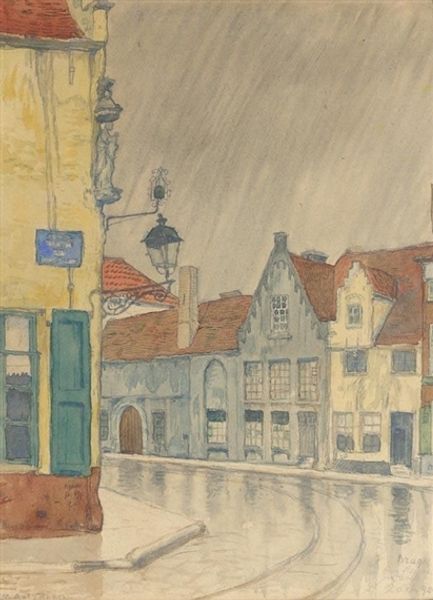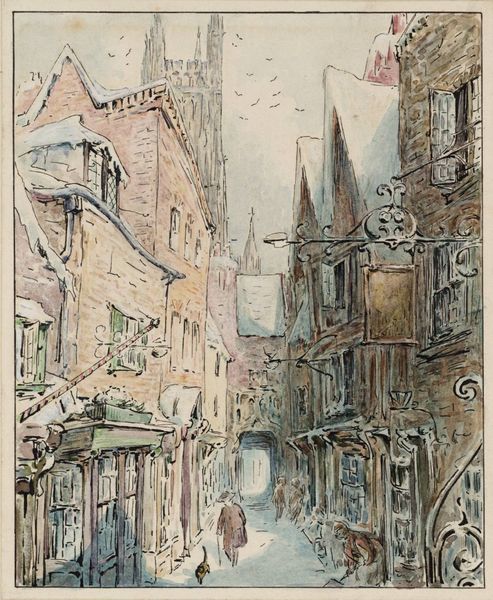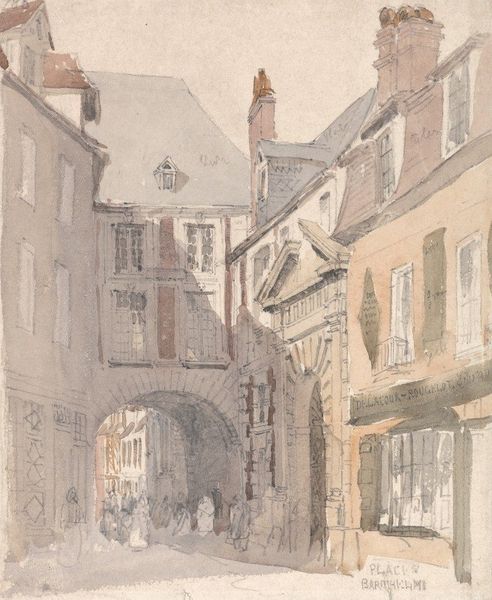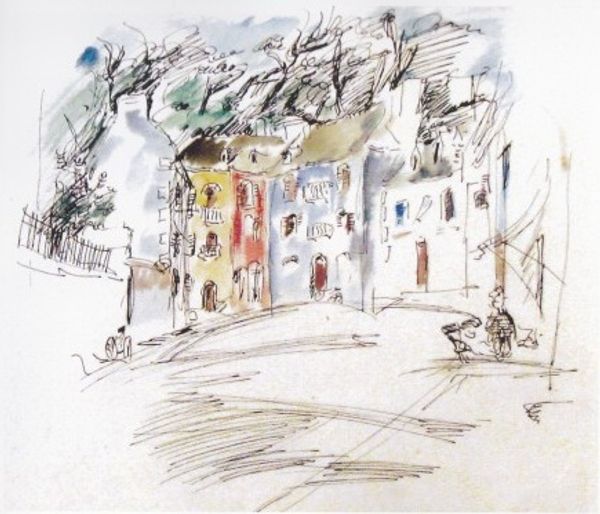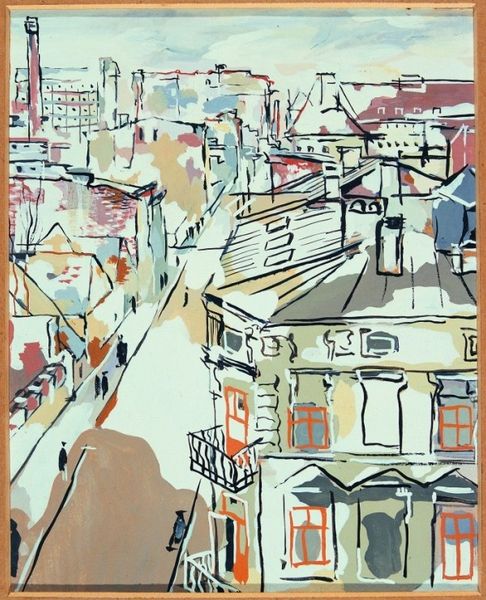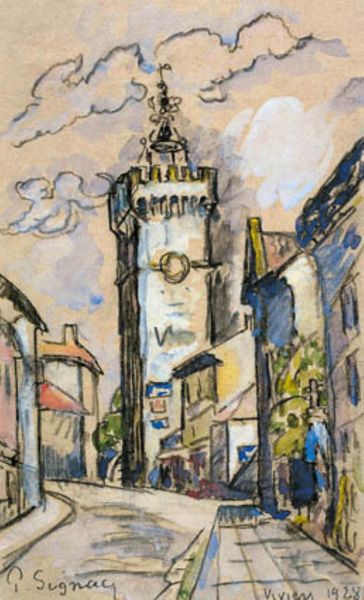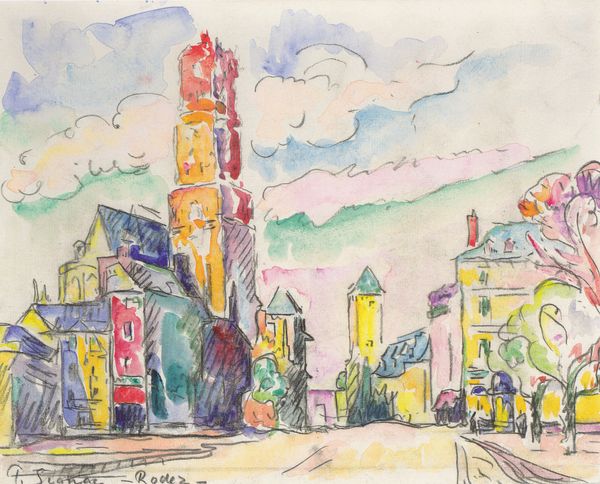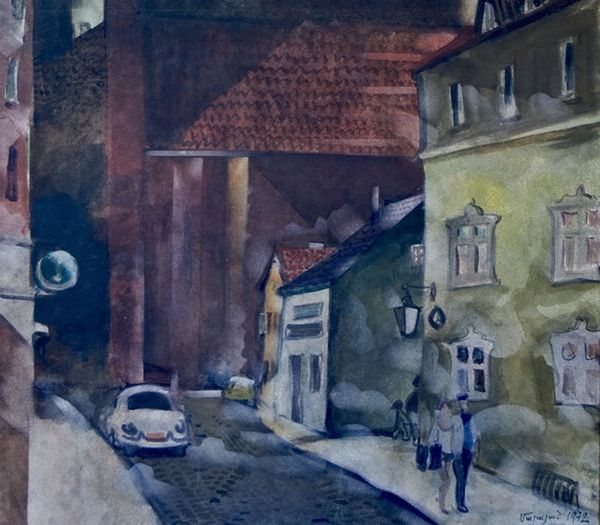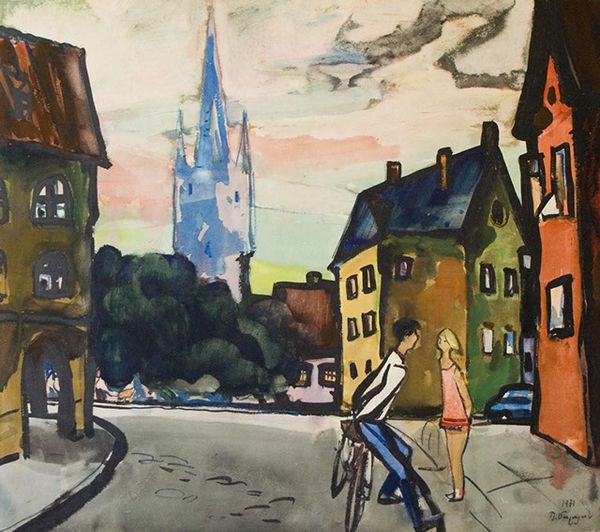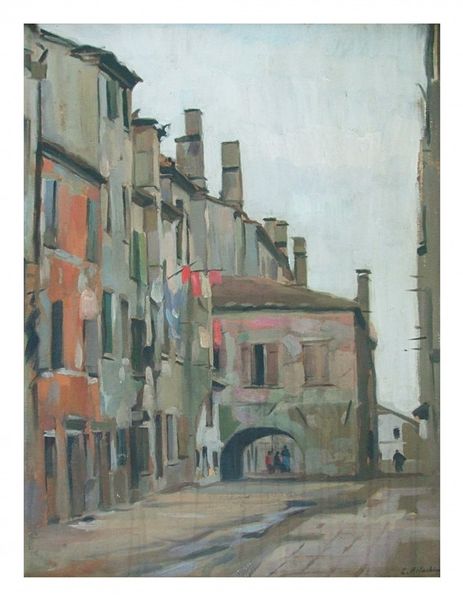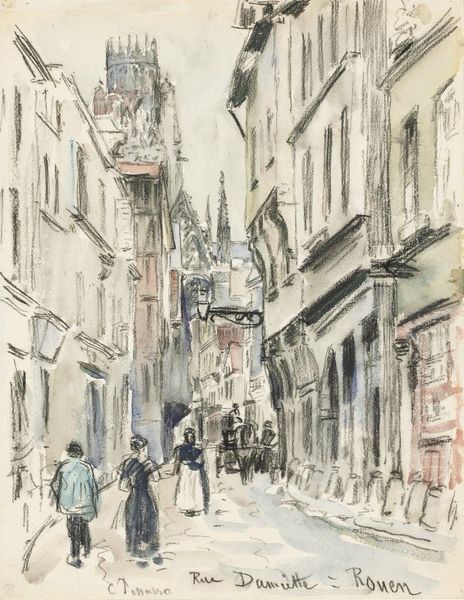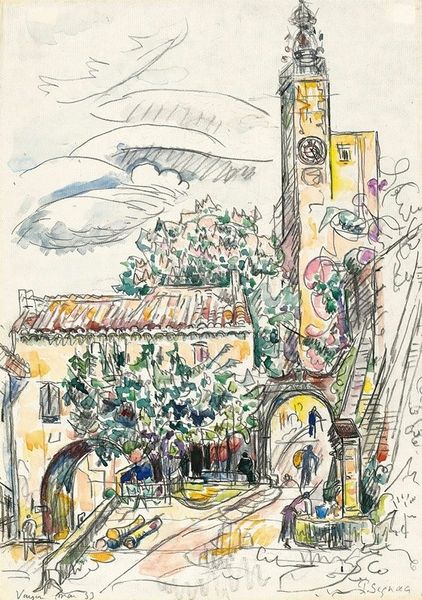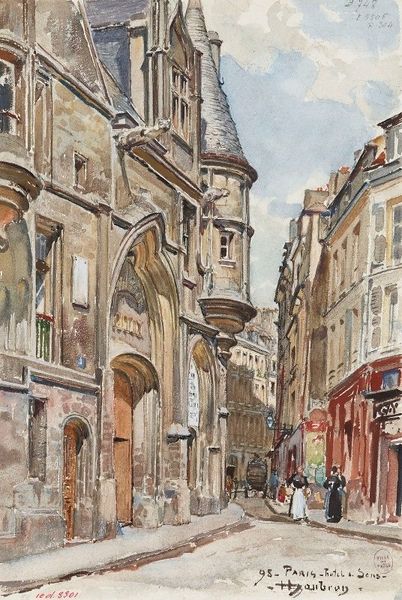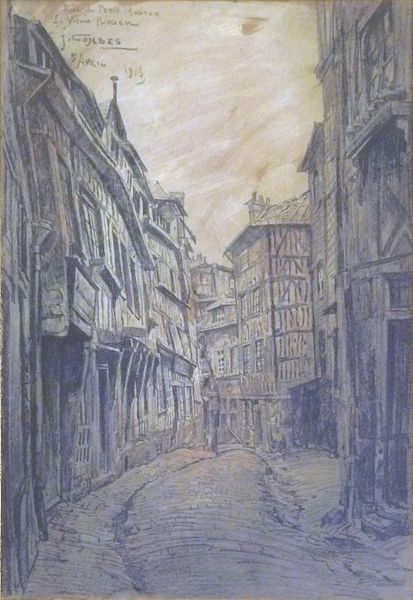
Copyright: Public Domain: Artvee
Editor: So, here we have Paul Signac's "Viviers" from 1933, done in watercolor and ink. It gives me a rather nostalgic feeling, almost like a vintage postcard of a European city. The colours are soft, yet the lines are sharp. What strikes you about this work? Curator: This work provides a valuable insight into the public's evolving perception of urban landscapes in the early 20th century. The quick, sketch-like style suggests a society increasingly oriented towards speed and fleeting impressions, characteristic of modern life. The choice to depict Viviers, likely a deliberate focus on the provinces away from Paris's intense artistic circles, speaks to a democratization of subject matter within art. Editor: Democratization? Could you elaborate? Curator: Certainly. Before, much art celebrated urban centers. Signac highlights a smaller town. Also consider, who consumes and exhibits art, and how their socio-economic statuses shape art and accessibility? It appears Signac uses his mastery of the watercolour technique to evoke the specific feel of a local town to viewers. Do you think it speaks to working class experience of that local community? Editor: It’s true, it has a feeling of a community, which relates to my impression of this being 'nostalgic' for a more real world, perhaps? How were such landscape images displayed to the public, and can we assess anything about their political position based on that, or based on the visual nature of the work itself? Curator: Signac displayed work often in independent salons. Remember that in 1933 much of the political left considered Realism the politically ethical choice, yet others looked down upon a simplistic view of that and yearned for less controlled venues for display of artwork to the public. The artist finds himself in an era of changing approaches. That is what speaks most to me about the history of display and consumption of the art. Editor: I now see how 'Viviers' isn't just a pretty picture, but a lens reflecting the changing socio-political landscape of the time. Thanks. Curator: And for me, it reinforced how even seemingly simple artworks can spark deeper considerations about art's place in society and public reception.
Comments
No comments
Be the first to comment and join the conversation on the ultimate creative platform.
